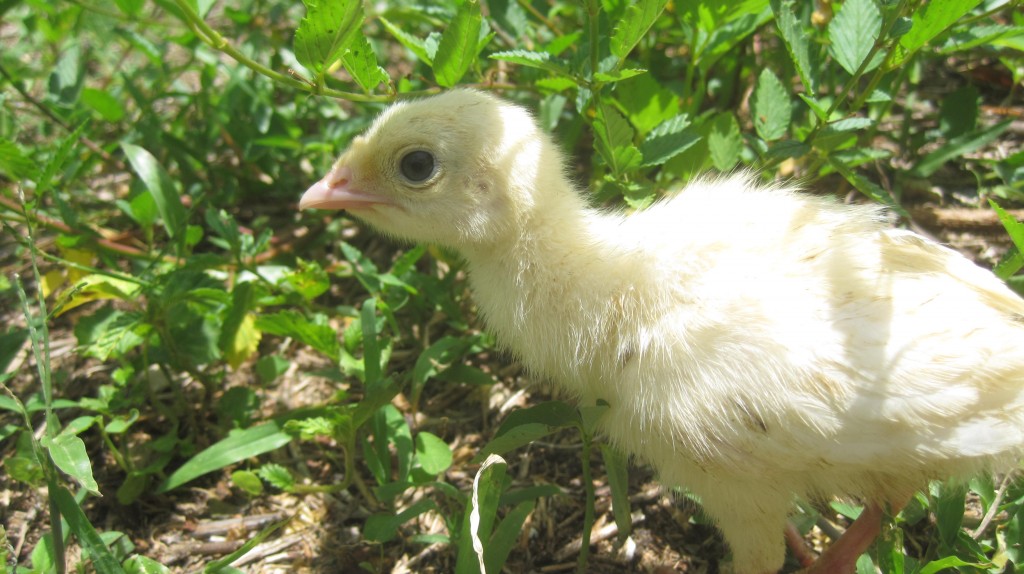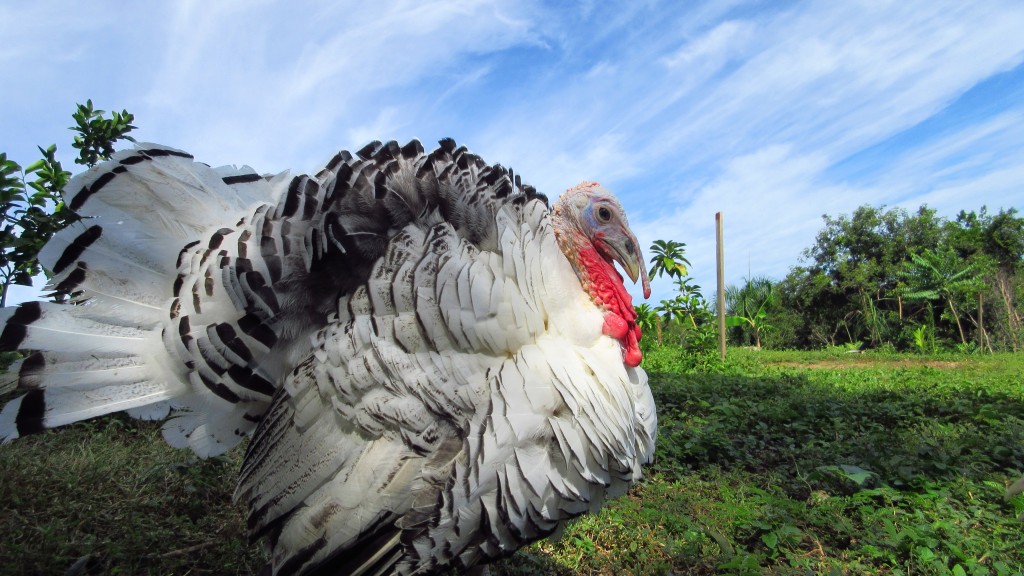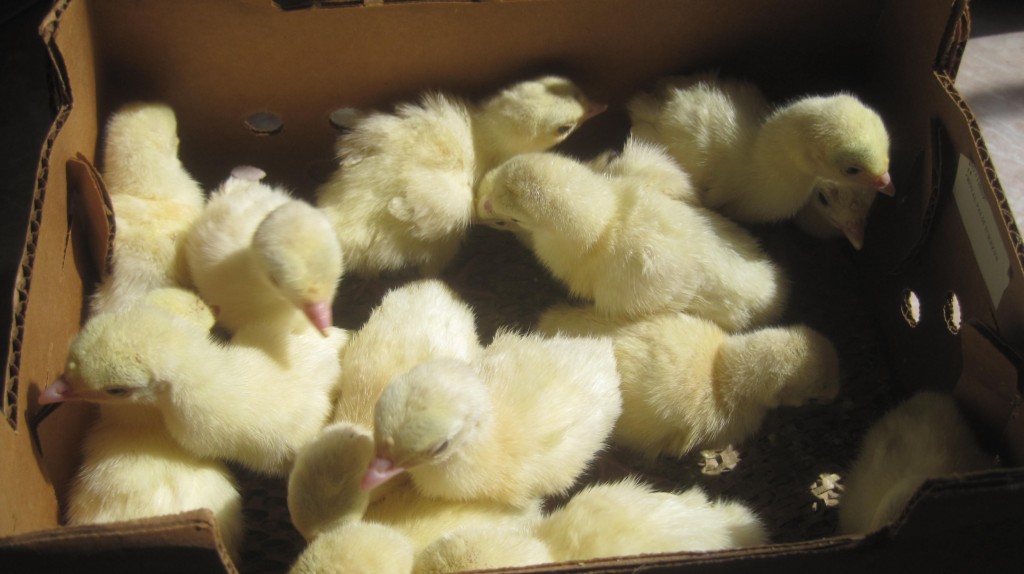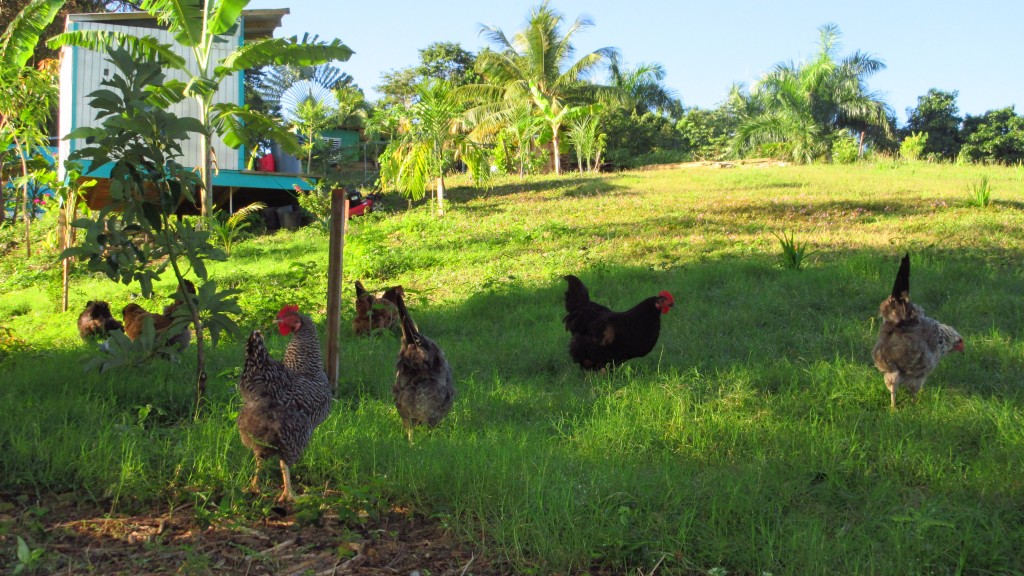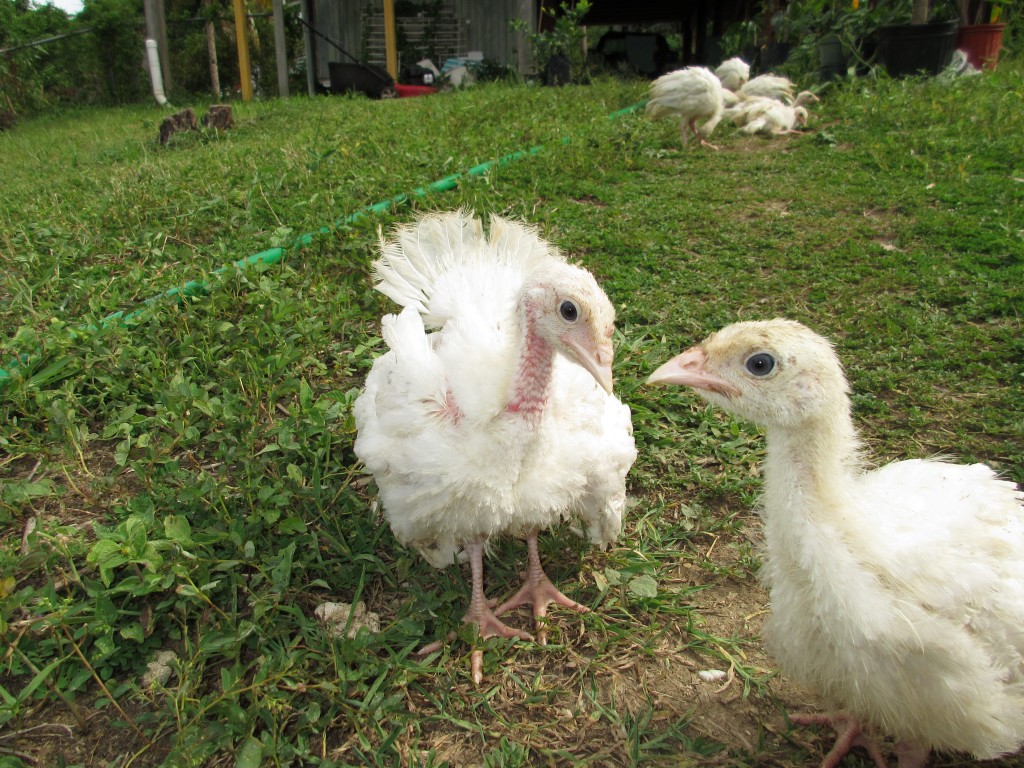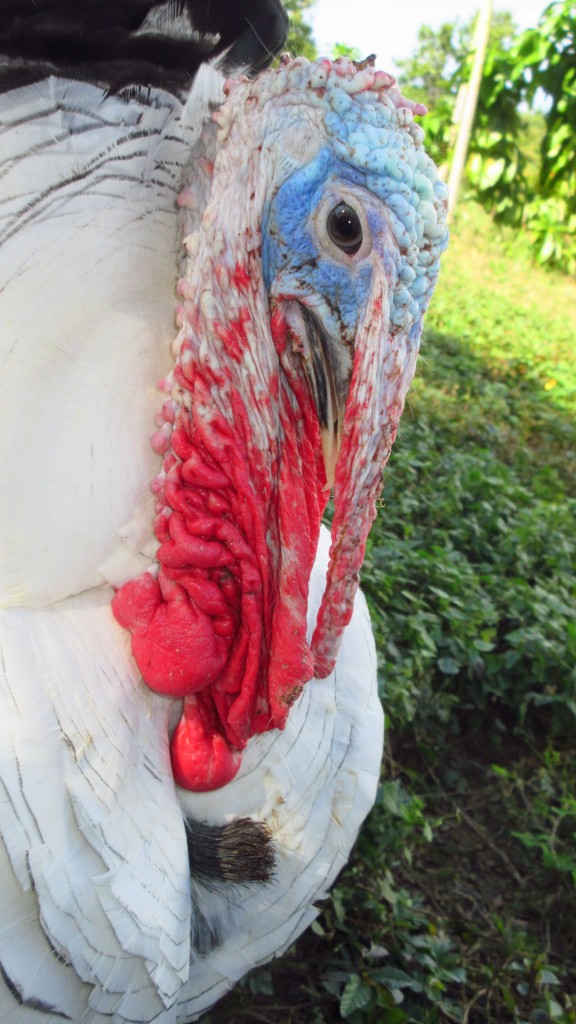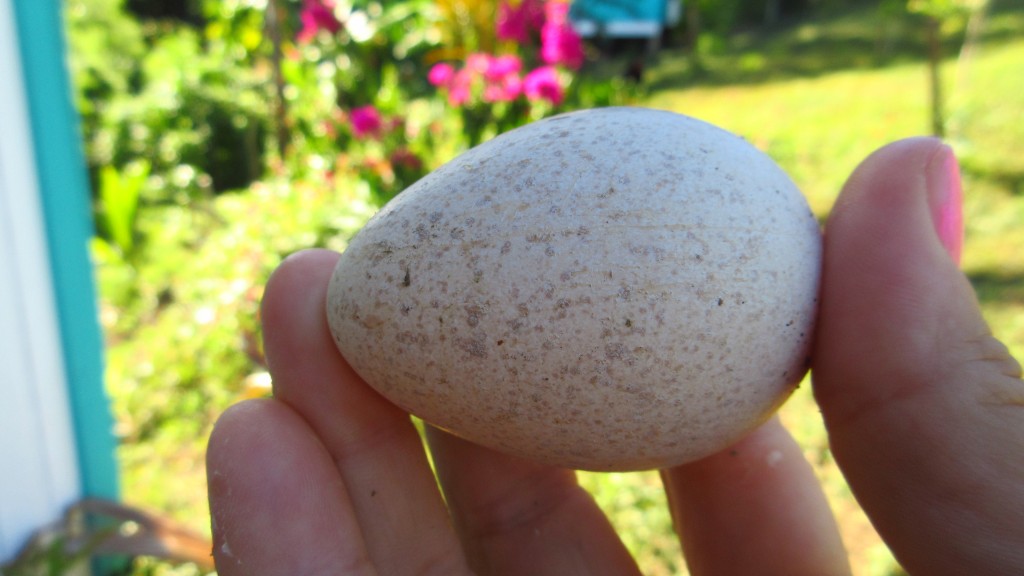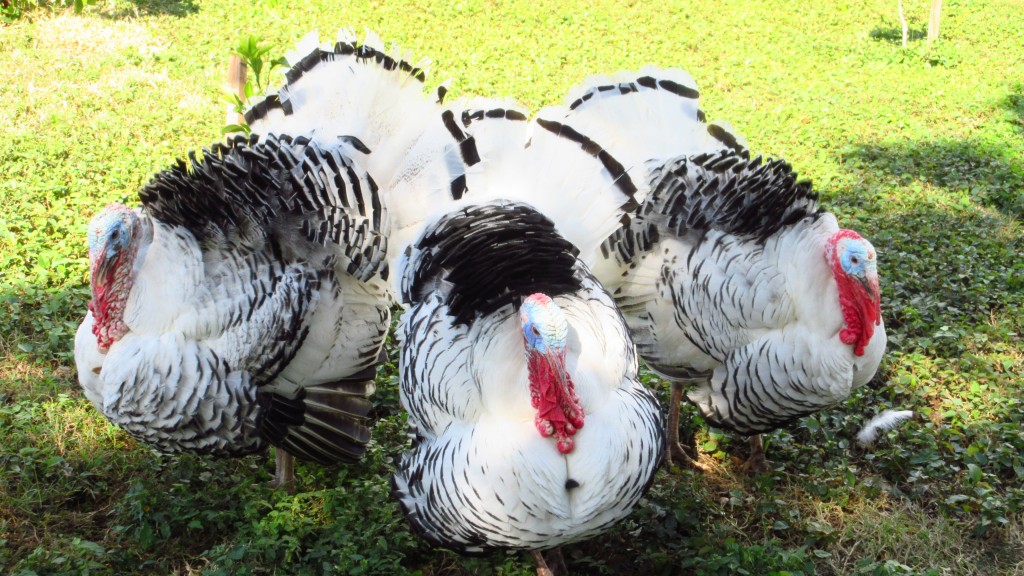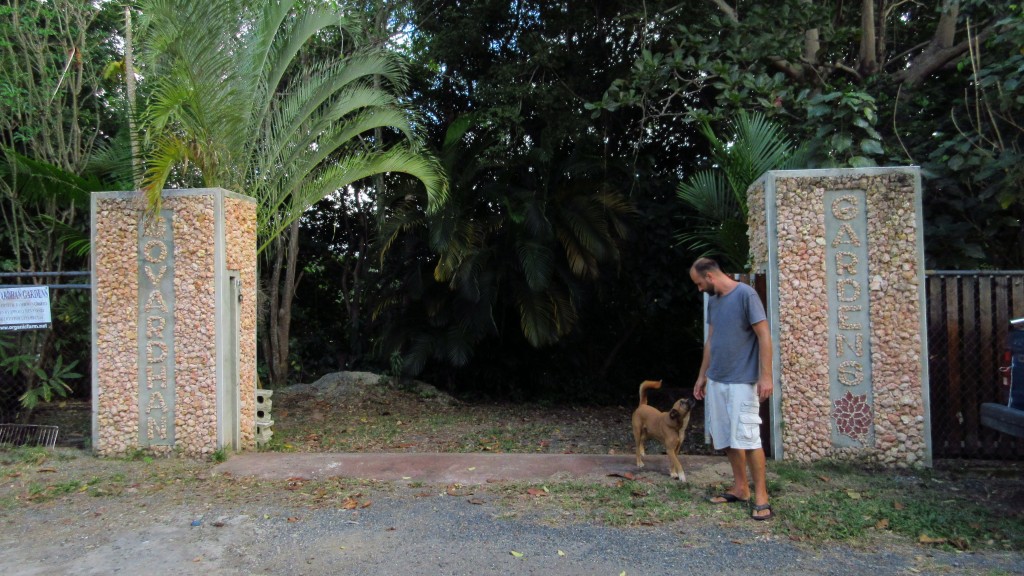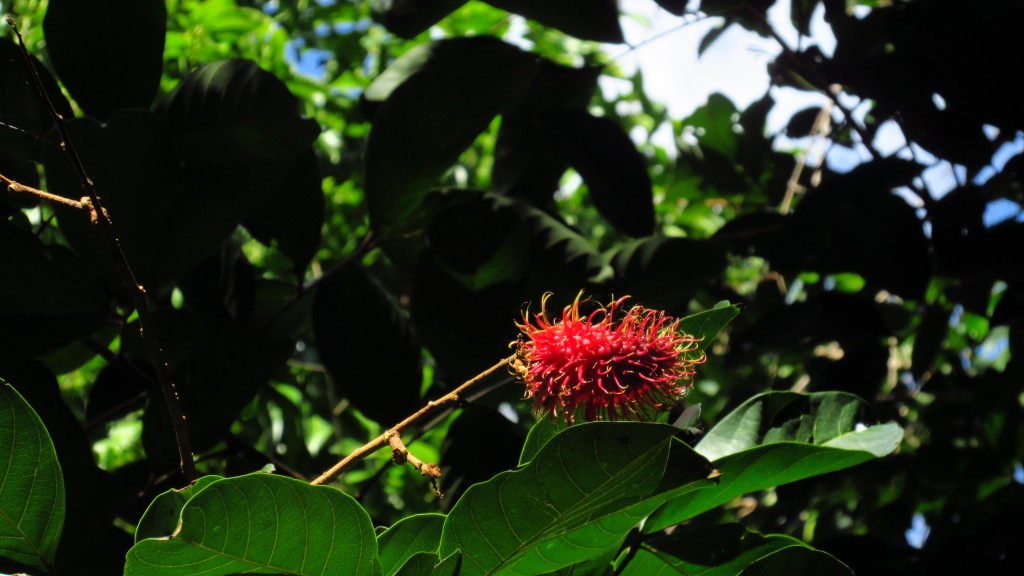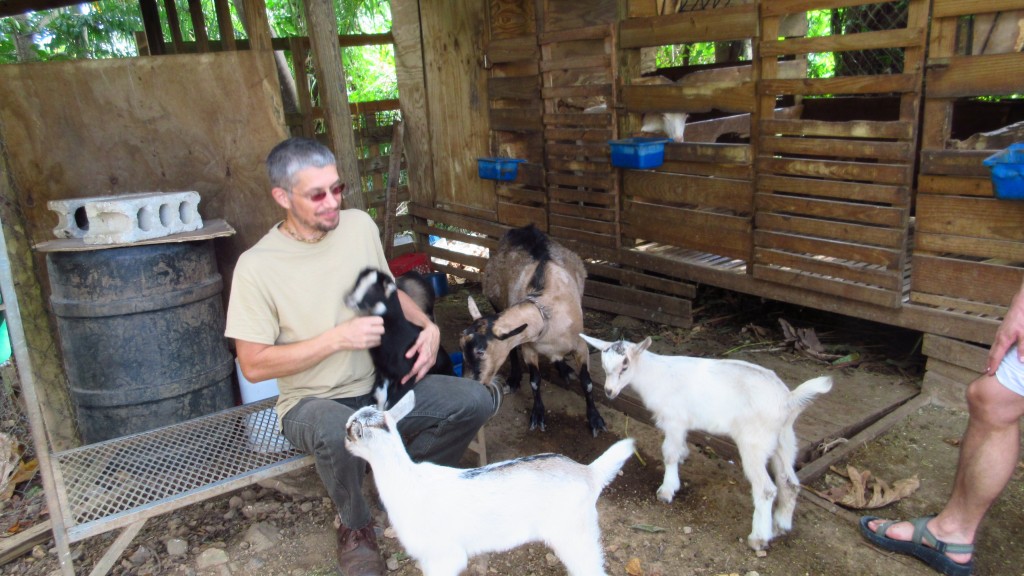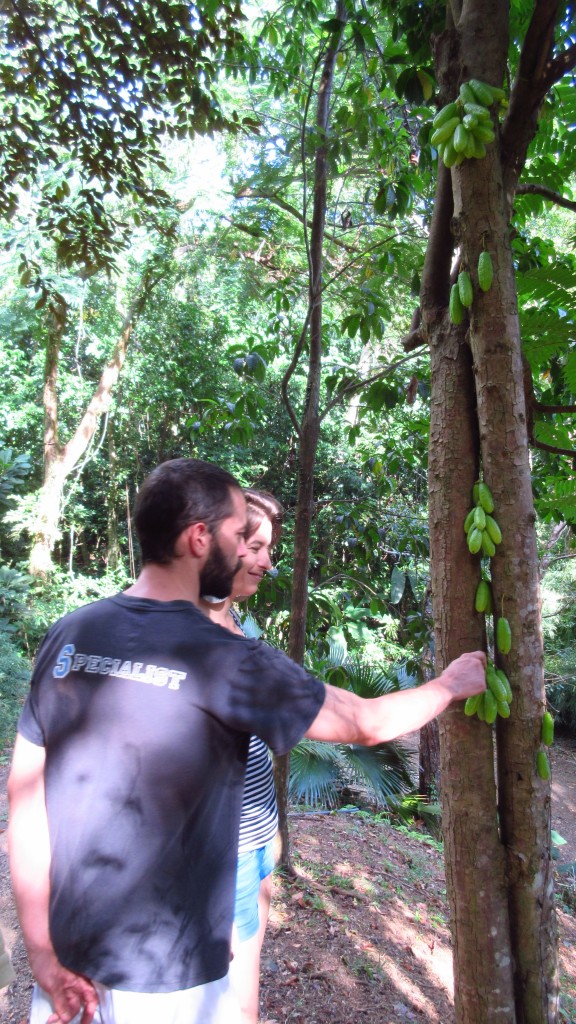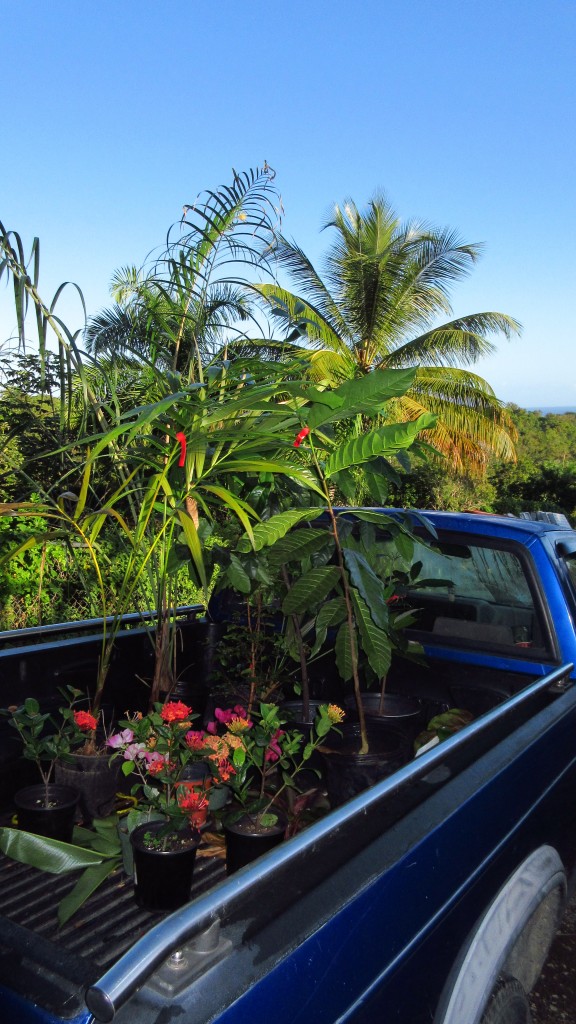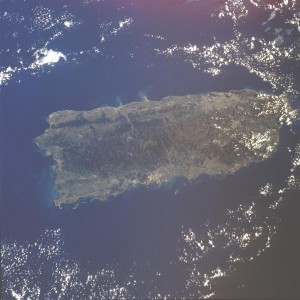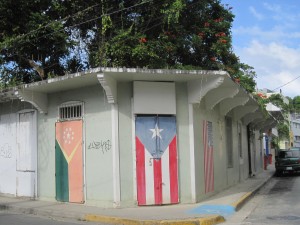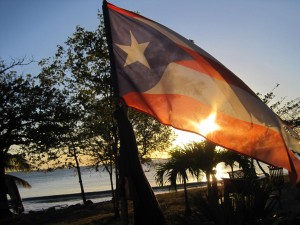Turkeys…
…in about 6 months
But that is not the only surprising thing about turkeys.
While we had some experience raising chickens back in Colorado, we had never raised turkeys before, so it was all pretty new to us. We have learned quite a few things about turkeys along the way and I thought it might be fun to share some of them.
Turkey Imprinting
Unlike chickens, turkeys imprint onto humans quite easily. We received our poults through the mail and they were about two days old. We were probably the first humans to hold them for longer than a short moment and to talk with them. Therefore, when they saw our faces and heard our voices, they began to imprint on us. This means that they took us to be their parents. This was so surprising to us and really developed a bond going in both directions. From a very young age the turkey poults would follow us everywhere we went. We could take them on walks and know that they would all stay together. This would be very unlikely to happen with chickens.
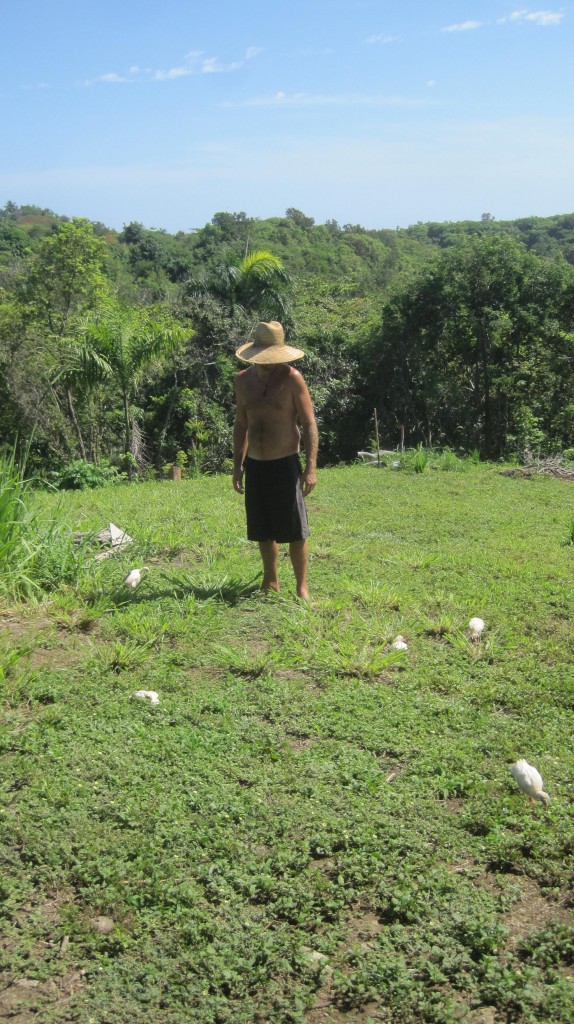
Taking the turkey poults for a walk
Young turkey poult coming to my calls
Young turkeys are vulnerable
As their adoptive parents we learned all about their potential predators as well as health issues. We had lots of hawk attempts (but no successful ones…we had learned from the chickens), a few rat attempts (including one that was taken in the middle of the day), a screwed up leg and turkey pox. Of the 15 that arrived in the mail, 12 made it to adulthood. We had to keep them under constant wire “tractor” boxes until they were about 3 months old.
Turkeys displaying and warning of a hawk
Turkey talk
Turkeys have very specific calls. Some we can imitate pretty well and others we can’t. A trilling of the tongue tells them that a predator is very nearby and they will rush to find cover or protection. A contented chirping is the most usual sound. The males don’t start gobbling until they are quite a bit older, but once they get going it’s hard to get them to stop. They mainly gobble at loud or unusual noises, especially high pitched sounds like hawk cries. Turkeys like to bark like dogs when someone new comes to visit. They make a bubble sound when they find something they find unusual like a toad or turtle.
Turkey Intelligence
Turkeys somehow got a bad reputation for being stupid. I don’t know exactly where this came from considering that they are quite a few wild turkeys all around the world, so they must know something about survival! Turkeys will not drown in a rainstorm. Their eyesight is adapted to their needs. Turkeys do seem to tolerate water more than chickens and don’t mind getting sprayed by the sprinkler. Their eyesight is a little different in that they notice things high in the sky more than chickens seem to (a benefit when watching for hawks). They also can hunt and peck close up things very keenly. Because of these too extremes, it seems that their eyesight is not quite as strong at about 10 feet.
Turkeys are to Dogs as Chickens are to Cats
I always tell people that turkeys are like dogs and chickens are like cats. I love them all! They just have different tendencies. Turkeys and dogs are very loyal and always want to be near you. They are great hiking companions. We can walk around in the jungle for 2 hours and they are right there underfoot. If we are sitting outside, they are right there. And if we go in the cabana, they want to go too! They climb to the roof and take turns jumping off…just waiting for us to come out and play. (And yes, sometimes this can get to be a little annoying.) Chickens, like cats, will come to you only if they want to…and usually only for food. They like to be watched and do their own thing. They are less loyal and much more independent. Chickens put themselves “to bed” in the coop each evening, whereas the turkeys have to be guided in every time. The chickens and the turkeys both get along fine in the yard and like to raid each others’ coop for food.
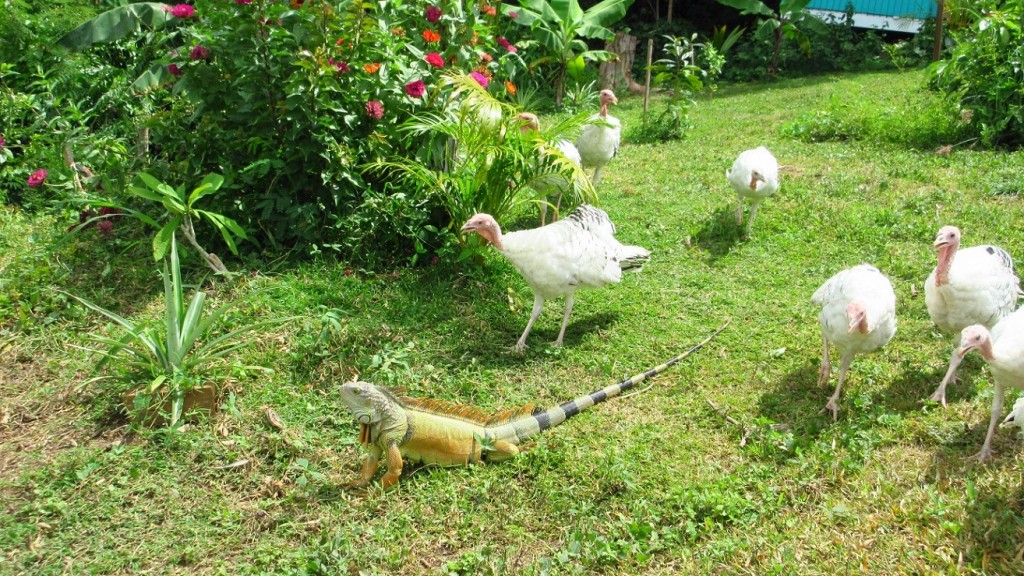
Turkeys are inherently curious about their surroundings
Heritage Turkeys
We have a variety of turkey called Royal Palm Turkeys. This is a heritage turkey breed. This means quite a lot including that (unlike most commercial breeds) they can move and breed naturally, they have a slower, more natural growth rate (unlike commercial breeds who have many problems even walking!), and because they are healthier, they can withstand outside conditions better. Royal palms in particular are slightly smaller, better mothers and great foragers. They are beautiful with their black and white feather patterns.
Turkey Mating and Eggs
Both the males and the females can “poof” and they start practicing this fan display at a very young age. With time, the males will mainly do this poofing but the females still do from time to time. Males are quite a bit larger than females, but that doesn’t mean they give them a break. During mating the male tom displays until the female hen submits and sits down. Then the male climbs on her back and commences a long drawn out dance that culminates in the cloacal kiss. The mating process for turkeys is much longer than for chickens and it often draws attention of the other males who often then start fighting….
Turkey Anatomy
I have to admit that turkeys are pretty strange looking birds. They are both beautiful and ugly at the same time, especially the males. But they are also the most interesting to look at. The long flap of skin that goes over the beak is called a “snood” (how great is that?!), the warty looking stuff is called
“caruncle”, the “wattle” is the neck flap and the “beard” is this little paint brush feeling feathers that stick out between the breasts.
Turkey as food
I enjoy raising these birds as pets and egg-layers much more than for their meat. However, there does come a time when it makes sense to harvest some for meat. For instance there were far too many males and because they fight so much amongst themselves, we knew we would have to cull some of them. I believe that if people eat meat (or any food for that matter), they should fully understand what that means, and that means, of course, that you (or your agent, often the corporate factory food system) must take a life. Raising these birds, I know that our animals were raised much more humanely and with appreciation for their lives than pretty much any other animal in the industrial system and I feel good knowing I am more connected to my food and the cycle of a full life and death.
Turkey Eggs
The turkey hens have recently started laying turkey eggs! They will get a little larger still, but they are about the size of a super jumbo chicken egg. The shells are a lot thicker, but otherwise, they taste just like a chicken egg and can be used in the same ways. We find that the turkeys don’t like the nesting boxes nearly as much as a bush in the woods and since they are always following us around they like to just pick a nearby spot and drop. We are still trying to figure this out. We would eventually like a hen to go broody and raise the next generation of these wonderful creatures!
Well, that’s enough turkey talk for now. If you have any turkey questions, feel free to ask! Gobble, gobble!

